SNAS660D June 2015 – May 2021 LM53600-Q1 , LM53601-Q1
PRODUCTION DATA
- 1 Features
- 2 Applications
- 3 Description
- 4 Revision History
- 5 Device Comparison
- 6 Pin Configuration and Functions
- 7 Specifications
- 8 Detailed Description
- 9 Applications and Implementation
- 10Power Supply Recommendations
- 11Layout
- 12Device and Documentation Support
- 13Mechanical, Packaging, and Orderable Information
7.8 Typical Characteristics
VIN = 13.5 V, TA = 25°C (unless otherwise noted). Specified temperatures are ambient.
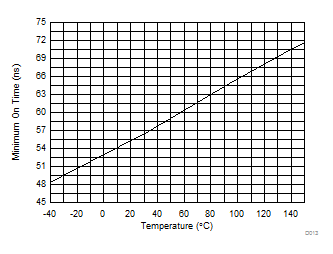
| Device Type = 3.3-V Fixed Output | ||
| Input Voltage = 20 V | Load = 500 mA | |
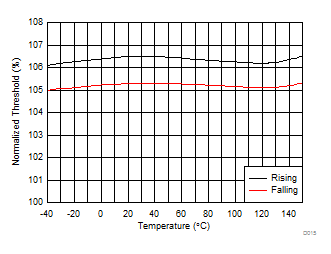
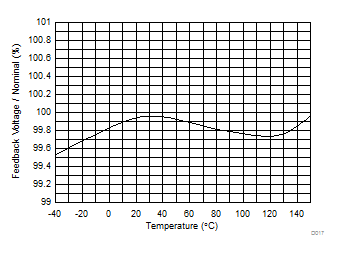 Figure 7-5 Normalized VFB vs Temperature
Figure 7-5 Normalized VFB vs Temperature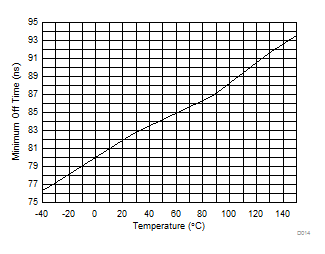
| Device Type = 1 A | 5-V Fixed Output In Dropout | |
| Output = 4.85 V | Load = 500 mA | |
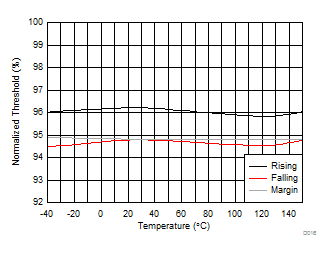
| Margin is the difference between the falling RESET threshold and actual regulation voltage which includes the effects of temperature. |
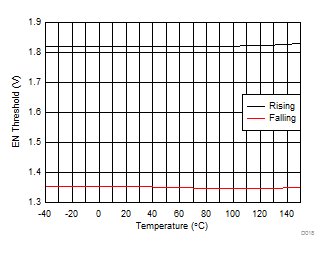 Figure 7-6 EN
Threshold vs Temperature
Figure 7-6 EN
Threshold vs Temperature